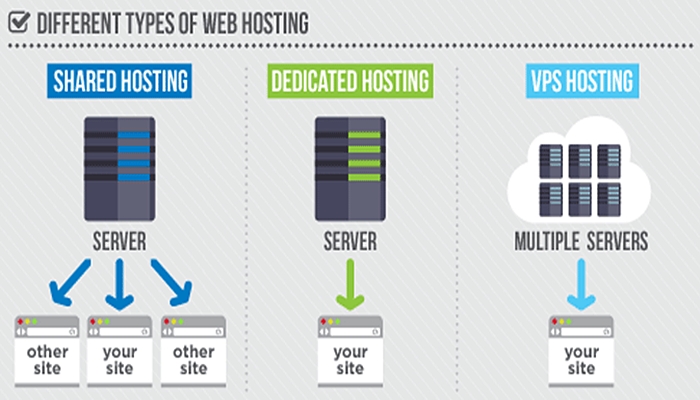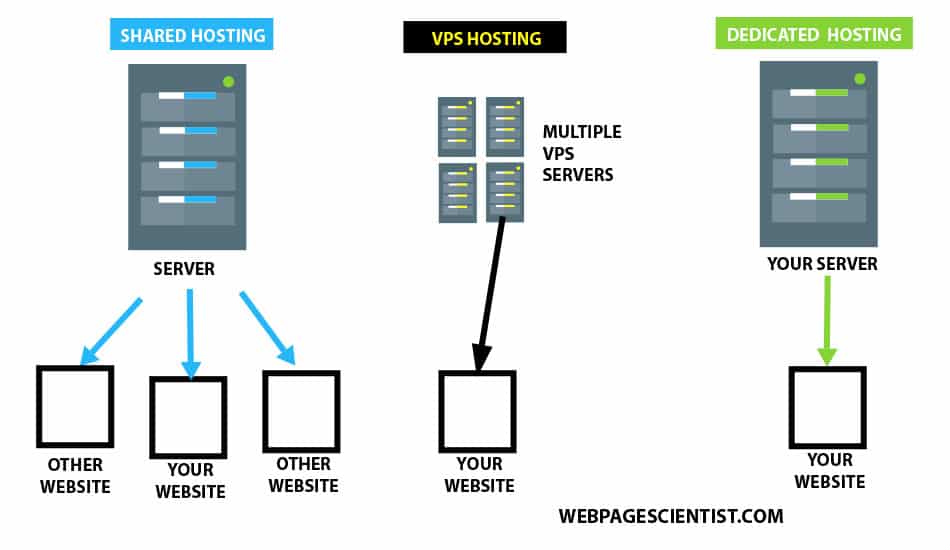Apache virtual hosts are a powerful tool for managing multiple websites on a single server. They allow you to host distinct websites with different domain names, content, and configurations, all while sharing the same Apache server resources. This flexibility is essential for web developers, system administrators, and anyone looking to efficiently manage multiple online presences.
Virtual hosts enable you to isolate websites, ensuring that changes to one site don’t affect others. This is particularly important for security, as it prevents potential vulnerabilities from spreading across your entire server. Furthermore, virtual hosts simplify the management of multiple domains, allowing you to easily configure and maintain each site independently.
Virtual Host Naming and Domains

Virtual hosts are assigned domain names to enable them to host different websites on the same server. This is achieved by configuring the server to recognize specific domain names and associate them with particular virtual host configurations.
Server Name Aliases
Server name aliases, also known as hostnames, are alternative names that can be used to access a virtual host. These aliases are defined in the virtual host configuration file and allow you to access the same website using multiple domain names. For example, you could configure a virtual host to respond to both “example.com” and “www.example.com”.
Using Wildcards in Virtual Host Configurations
Wildcards are used in virtual host configurations to create generic configurations that apply to a range of domain names. This is particularly useful when you need to host multiple websites with similar domain names.
A wildcard character, typically an asterisk (*), can be used in the ServerName directive to match any domain name that starts with a specific prefix. For example, “*.example.com” would match “blog.example.com”, “shop.example.com”, and any other domain name that ends in “example.com”.
Managing Virtual Host Content
Virtual hosts are the foundation for serving different content on a single web server. Each virtual host is essentially a separate website, allowing you to host multiple websites on a single server without them interfering with each other.
Document Roots and Virtual Directories
The document root is the directory where the web server looks for files to serve when a request comes in for a specific virtual host. Virtual directories are subdirectories within the document root that can be used to organize website content.
For example, if you have two websites, “example1.com” and “example2.com,” you could set up two virtual hosts, each with its own document root. The document root for “example1.com” might be “/var/www/example1,” while the document root for “example2.com” might be “/var/www/example2.”
You can then create virtual directories within these document roots to further organize content. For instance, you might create a “blog” virtual directory within the document root for “example1.com” to store blog posts.
The document root is the root directory for a virtual host, while virtual directories are subdirectories within the document root.
Managing Content for Different Virtual Hosts
To manage content for different virtual hosts, you need to understand the relationship between document roots, virtual directories, and the web server configuration.
Here are some common scenarios:
- Serving Static Content: For static content like HTML files, images, and CSS files, you simply need to place them in the appropriate directory within the document root of the virtual host. The web server will then serve these files when a request comes in.
- Serving Dynamic Content: For dynamic content like PHP scripts or Python applications, you need to ensure that the web server is configured to execute the appropriate code. This typically involves configuring the virtual host to use a specific interpreter or framework. For example, if you are using PHP, you might need to configure the virtual host to use the PHP interpreter to process PHP files.
- Using Virtual Directories: Virtual directories allow you to organize content within a virtual host. For example, you might create a “blog” virtual directory to store blog posts or an “images” virtual directory to store images. You can then configure the web server to serve content from these virtual directories using the appropriate directory structure.
Virtual Host Performance Optimization

Virtual host performance is crucial for delivering a seamless user experience and ensuring the smooth operation of your web applications. A slow website can lead to frustrated users, decreased engagement, and ultimately, lost revenue. By implementing optimization techniques, you can significantly enhance your virtual host’s performance, resulting in faster load times, improved responsiveness, and a more enjoyable user experience.
Caching, Apache virtual host
Caching plays a vital role in virtual host performance optimization by storing frequently accessed data in a temporary location, allowing for quicker retrieval. When a user requests a resource, the server first checks the cache. If the data is available in the cache, it is served directly, bypassing the need to access the original source, significantly reducing response times.
There are several caching mechanisms available:
* Browser Caching: Browsers store copies of recently accessed files, such as images, CSS, and JavaScript, in their cache. When a user revisits the same page, the browser can serve these files from its cache, eliminating the need to download them again. This significantly improves page load times, especially for users with slower internet connections.
* Server-Side Caching: Servers can store frequently accessed content, such as web pages, database queries, or API responses, in their own memory or disk-based cache. This allows for quicker delivery of the data to users, reducing the load on the server and improving overall performance.
* Content Delivery Networks (CDNs): CDNs distribute content across multiple servers located geographically closer to users. When a user requests a resource, the CDN delivers the content from the nearest server, minimizing latency and improving loading times.
Compression
Compressing data before sending it to users can significantly reduce file sizes, resulting in faster downloads and improved performance.
* Gzip Compression: Gzip is a widely used compression algorithm that can reduce the size of text-based files, such as HTML, CSS, and JavaScript, by up to 70%. When a user requests a resource, the server can compress the file using Gzip before sending it to the browser. The browser then decompresses the file, allowing for faster loading times.
* Brotli Compression: Brotli is a newer compression algorithm that offers even better compression ratios than Gzip, especially for text-based files. It is supported by most modern browsers and can significantly reduce file sizes, further improving performance.
Load Balancing
Load balancing distributes incoming traffic across multiple servers, ensuring that no single server becomes overloaded. This is essential for maintaining high performance, especially during peak traffic periods.
* Round Robin: This technique distributes requests to servers in a circular manner, ensuring that each server receives an equal share of the load.
* Least Connections: This method directs traffic to the server with the fewest active connections, ensuring that servers with more available resources handle more requests.
* Weighted Round Robin: This approach assigns weights to servers based on their capacity, allowing for a more balanced distribution of traffic based on server resources.
Virtual Host Examples and Use Cases
Virtual hosts are a powerful tool for managing multiple websites, applications, and services on a single server. By creating separate virtual host configurations, you can isolate different websites and applications, ensuring that they do not interfere with each other. This allows you to manage different projects, host multiple clients, or run diverse applications on a single server efficiently.
Examples of Virtual Host Configurations
Virtual host configurations allow you to define specific settings for each website or application, including domain names, document roots, ports, and other relevant parameters. Here is a table that showcases some common virtual host configurations:
| Configuration | Description | Example |
|---|---|---|
| Name-based Virtual Host | Multiple websites share the same IP address but are differentiated by their domain names. |
|
| IP-based Virtual Host | Different websites are hosted on different IP addresses. |
|
| Port-based Virtual Host | Websites are accessed on different ports, allowing multiple websites to run on the same IP address and domain name. |
|
| Directory-based Virtual Host | Different websites are hosted in separate directories on the server. |
|
Virtual Host Use Cases
Virtual hosts are used in various scenarios to improve website management and resource utilization. Here are some common use cases:
- Hosting Multiple Websites: Virtual hosts allow you to host multiple websites on a single server, which is cost-effective and efficient. This is especially useful for web hosting providers or individuals managing multiple online projects.
- Running Different Applications: You can use virtual hosts to run different applications on the same server, such as a website, a web application, a database server, or a mail server. This allows you to manage different services independently and optimize resource allocation.
- Developing and Testing Websites: Virtual hosts are useful for developers to create separate environments for testing and development. This allows them to work on different projects simultaneously without interfering with live websites.
- Serving Different Content Based on User Location: Virtual hosts can be used to serve different content based on the user’s location. This is achieved by configuring different virtual hosts for different geographic regions.
- Creating Secure Connections: You can use virtual hosts to set up secure connections (HTTPS) for specific websites or applications. This is important for protecting sensitive data and improving website security.
Advantages and Disadvantages of Using Virtual Hosts
Virtual hosts offer several advantages, but they also come with some potential drawbacks.
Advantages
- Improved Resource Utilization: Virtual hosts allow you to share server resources efficiently, reducing the need for multiple physical servers. This can save on hardware costs and energy consumption.
- Increased Security: By isolating websites and applications, virtual hosts help prevent one website from affecting others in case of security breaches or performance issues. This enhances overall system security.
- Simplified Management: Virtual hosts provide a centralized platform for managing multiple websites and applications. This simplifies administration tasks, such as updating software, managing user accounts, and monitoring performance.
- Flexibility and Scalability: Virtual hosts offer flexibility in configuring websites and applications. You can easily add or remove virtual hosts as needed, allowing you to scale your infrastructure based on demand.
Disadvantages
- Increased Complexity: Configuring and managing virtual hosts can be more complex than managing a single website. This requires technical expertise and can be challenging for beginners.
- Performance Overhead: Virtual hosts can introduce some performance overhead due to the additional processing required to route requests to the appropriate virtual host. However, this overhead is typically minimal and can be mitigated by optimizing server configuration.
- Security Risks: If virtual host configurations are not properly secured, they can pose security risks. It’s essential to implement robust security measures to protect against unauthorized access and attacks.
Final Wrap-Up: Apache Virtual Host
Understanding Apache virtual hosts is crucial for anyone managing multiple websites. By leveraging their capabilities, you can optimize resource utilization, enhance security, and simplify website management. Whether you’re a seasoned developer or just starting out, mastering virtual hosts is a valuable skill that can streamline your web development workflow and enhance your online presence.
Apache virtual hosts are a powerful way to manage multiple websites on a single server. For instance, if you’re running a website on a hp proliant dl380 g7 , you can easily set up virtual hosts to separate different projects, development environments, or even client websites.
This approach provides a streamlined and efficient way to manage your web presence while optimizing server resources.




